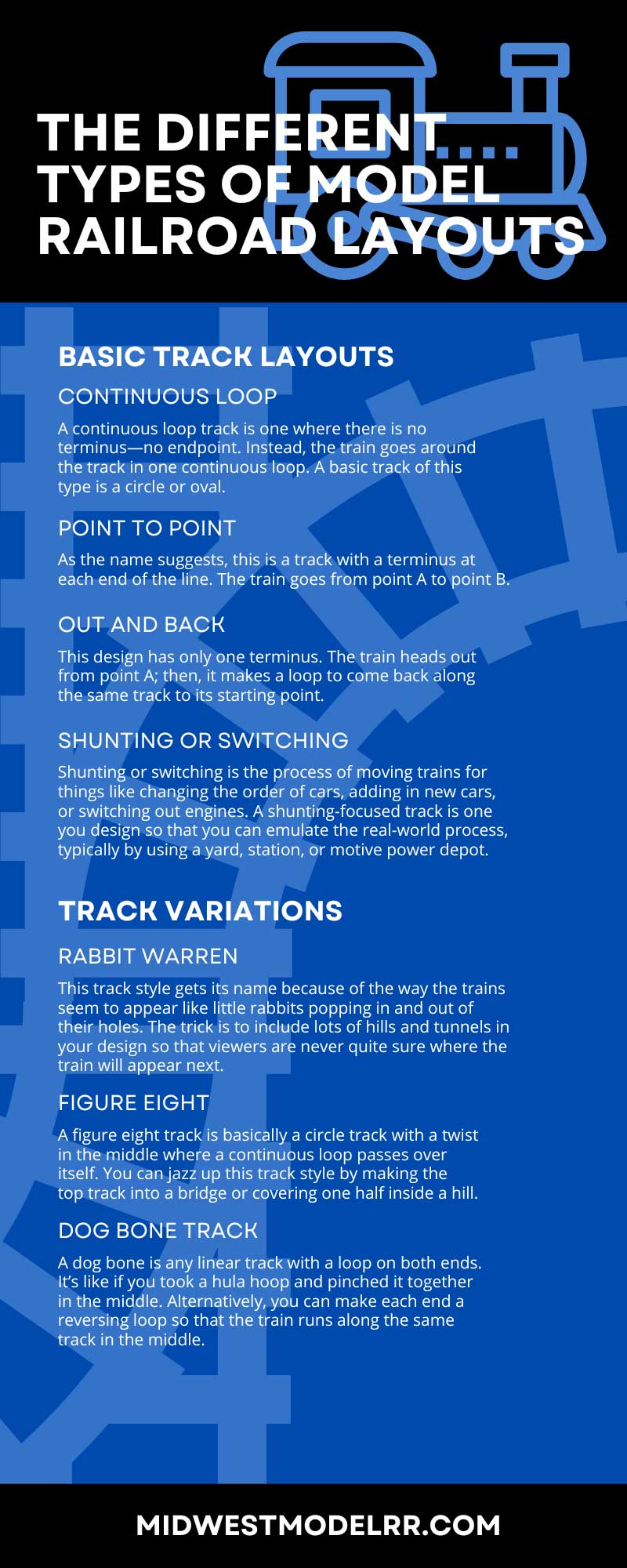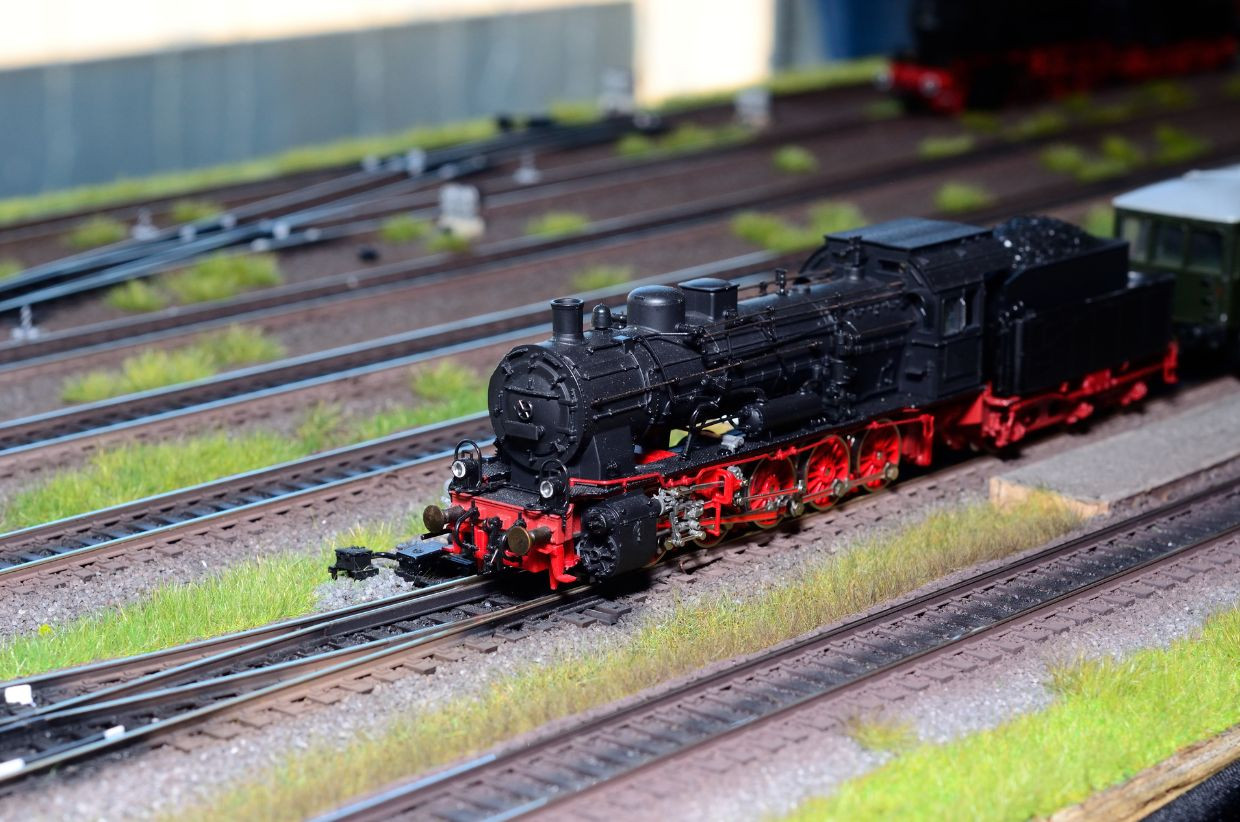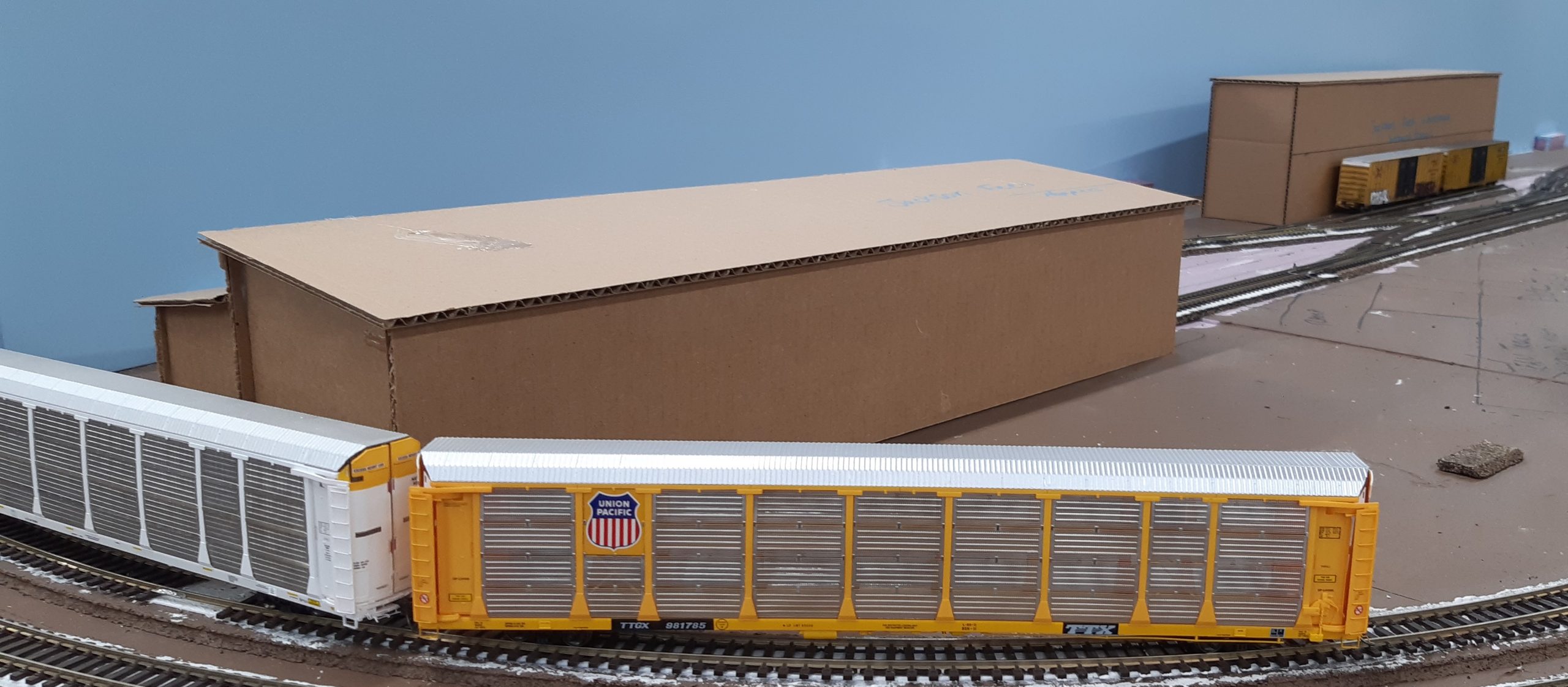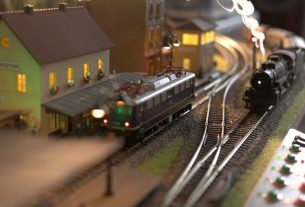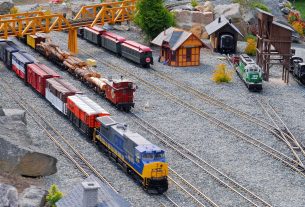
Choosing a layout is one of the most important steps when planning a new model railroad. You must account for the scale of the train, the size of the diorama, and any special features that you plan to include before you start building. Whether you’re new to the hobby or an old pro looking to change up your layout preferences, we’ve provided a list of the different types of model railroad layouts to inspire your next project.
Basic Track Layouts
There are only four types of model train track layouts, though you can change and combine them in all sorts of ways. Here are the basic four.
Continuous Loop
A continuous loop track is one where there is no terminus—no endpoint. Instead, the train goes around the track in one continuous loop. A basic track of this type is a circle or oval.
Point to Point
As the name suggests, this is a track with a terminus at each end of the line. The train goes from point A to point B.
Out and Back
This design has only one terminus. The train heads out from point A; then, it makes a loop to come back along the same track to its starting point.
Shunting or Switching
Depending on where you live, the name of this type of track will vary. Shunting or switching is the process of moving trains for things like changing the order of cars, adding in new cars, or switching out engines. A shunting-focused track is one you design so that you can emulate the real-world process, typically by using a yard, station, or motive power depot. Some people even make games with these kinds of tracks!
Track Variations
You can combine basic track styles into all kinds of more complicated versions. You can also use tunnels, inclines, and bridges to make your tracks appear more complex. Here are some of the variations.
Rabbit Warren
This track style gets its name because of the way the trains seem to appear like little rabbits popping in and out of their holes. The trick is to include lots of hills and tunnels in your design so that viewers are never quite sure where the train will appear next.
Figure Eight
A figure eight track is basically a circle track with a twist in the middle where a continuous loop passes over itself. You can jazz up this track style by making the top track into a bridge or covering one half inside a hill. Alternatively, the figure eight can also loop back on itself to make a looped-eight track.
Dog Bone Track
A dog bone is any linear track with a loop on both ends. It’s like if you took a hula hoop and pinched it together in the middle. Alternatively, you can make each end a reversing loop so that the train runs along the same track in the middle.
How To Add Complexity
There are even more things you can do to customize your model railway layout, like adding multiple layers to the diorama, multiple tracks, intermediate stations, and even branching lines. If you’re new to the hobby, it might be a good idea to limit your first track to include only one or two of these advanced features, but that means you’ll have more things to try out on a future project.
One of the best ways to marry your track design to your landscape is to think about how the track works with the land, winding through hills and valleys or looping around desert mesas. Just because you decide to keep your track layout simple doesn’t mean your overall design will be boring.
How To Choose a Layout
There are so many different types of model railroad layouts that it might be hard to choose which one to build next. Here are a few suggestions when making your decision.
What Is the Story?
Every model railway tells a story about a train and its relationship with the towns and landscapes it passes through. You may center your story around a particular train line, engine model, or location. Whichever is the case, let these priorities guide some of your choices.
For example, if you’re designing for a passenger train, you’ll need to think about who those people are, where they live, and why they might be traveling. You could decide to show people commuting from their hometown to the mine or port where they work, with the train winding around the hills that separate the two locations.
Tools for Planning
Thankfully, you’re not on your own to choose a layout. If working on tracks, building scenery, and adding weathering effects to your HO scale rolling stock is more your focus, you can always look for a pre-designed layout online. There are even free 2D and 3D planning tools with dozens of ready-made designs.
Few people are lucky enough to have a room or basement where they can build giant model train systems, so a good layout will balance having plenty of track with the need for scenery and open spaces to evoke realism.
Using Kits
Kits are a great entry point into the hobby if you’re curious about model trains and want to see what it’s like to build one. Train kits usually include an engine and 2–3 cars, with enough track for a simple layout. Then, you can use scenery packs to add detail to your layout.
The nice thing about kits is that they come with easy-to-follow instructions, and they often simplify some of the more complicated aspects of model railways. You can use kits to learn how to build working railways without spending tons of money. Once you’re ready to move on to more complex projects, you’ll find it much easier to pick up new techniques since you have already learned the basics.
The End of the Line
It doesn’t matter if this is your first model railway project or your 50th. Everyone can stand to learn new ideas, try out different track layouts, and figure out better ways to make railway dioramas come to life. At Midwest Model Railroad, we’re happy to have you in the model train community, and we’d love to answer any questions you may have, no matter your experience level.
